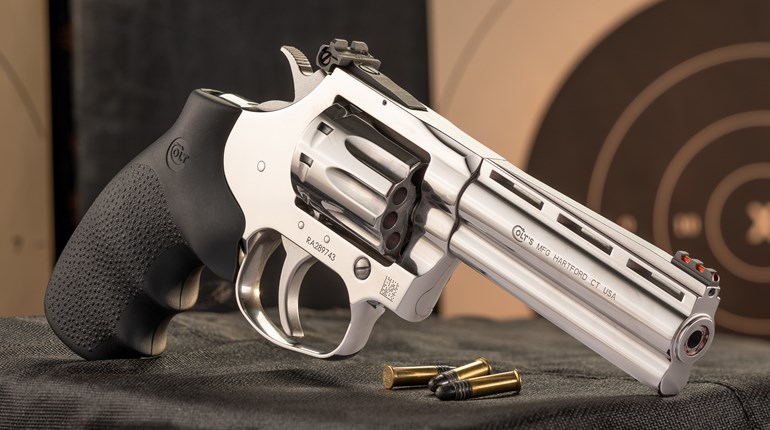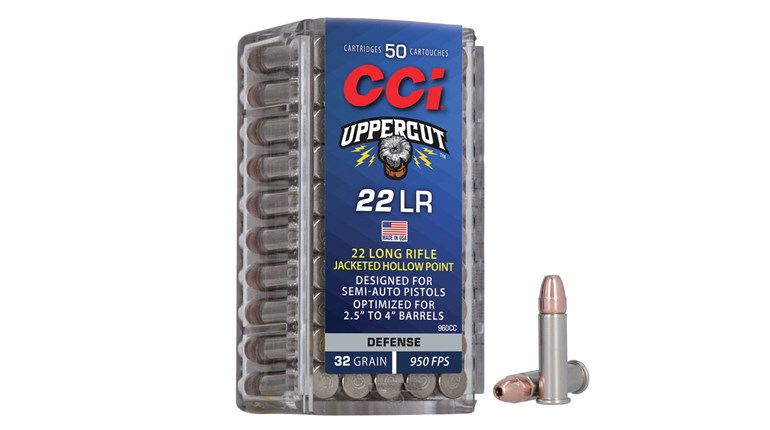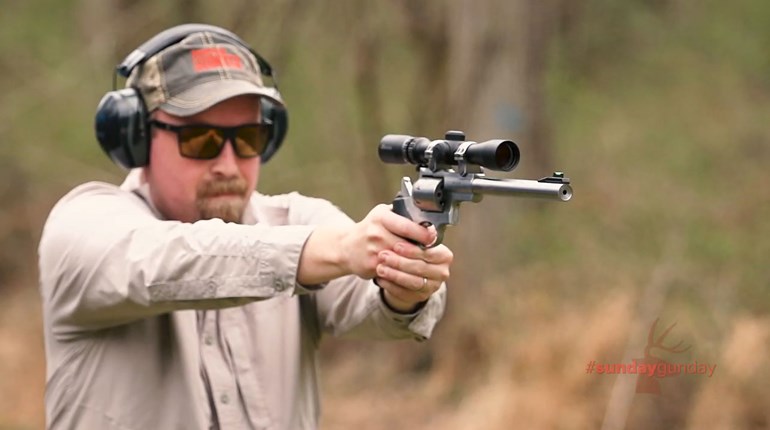
Revolvers are often known as “hand cannons” for good reason. The cartridges for which revolvers are chambered can be extremely powerful compared to those loaded in semi-automatic pistols, making them a great choice for hunting. Without getting too deep into the realm of obscure cartridges, the most “common” of oddity revolver chamberings is the .454 Casull, which has developed something of a cult following. There are also the .458 SOCOM enthusiasts, who typically prefer the AR platform. And while many .458 SOCOM fans adore the cartridge for its military foundation, the round is popular for hunting. So which cartridge gets the nod, and why? I’ll be honest, this is probably the most heated “alternative cartridge” piece I’ve written yet, because as we’ll see, both cartridges have their own pros and cons. The cartridges are almost equally niche in different component aspects and factory ammo availability, and both cartridges perform nearly identically given similar barrel lengths (we’ll touch on that more later). But in my eyes, there is a clear winner, if only by a slight margin.
Since the platform for each gun was already somewhat established, we’ll start there. The .454 Casull not only functions in revolvers—including those chambered for the .460 S&W Mag.—but can be shot out of lever guns chambered for the same respective cartridges, which makes for a cool primary/side arm combination and gives a bit more utility to the .454 Casull round. However, the .458 SOCOM is specifically designed for the AR-15 platform, giving it both an edge in capacity and rate of fire (assuming you live in a state without magazine capacity laws), which is crucial for something like hogs. Now, in other circumstances, like bear defense, I may take the .454 Casull in a wheelgun over the longer, heavier AR-15 in .458 SOCOM, but the chances of running into a bear versus a sounder of hogs is much less likely where I live (Texas). That said, to each their own. I’d still make the argument that, with the rampant spread of feral hogs across the country, a .458 SOCOM is more applicable overall for the average hunter in America. The other upside for the AR-15 platform is that it is much more customizable than a lever gun. With the rise of “tactical” lever guns, that may not be the case so much anymore, but it’s still more difficult to adjust things like LOP on a lever gun than on an AR-15. Lever guns are also allowed in far more states (as far as I’m aware, there are no restrictions on lever guns in any state), and the .454 Casull can be used in states requiring straight-wall cartridges for hunting. That said, solely from a hunting perspective where I live, and where most people live, the .458 SOCOM gets a point for platform advantage when it comes to a hunting-specific application, simply because the AR-15 platform overall is far more customizable to each individual shooter.

Availability is something else to consider. There are two aspects to think about in terms of “availability”: ammo and reloading components. Starting with ammo, Midway USA shows 25 different options from nine manufacturers for the .454 Casull, and 21 choices for the .458 SOCOM from four manufacturers. Prices for a box of 20 rounds (each cartridge comes in boxes of 20) .454 Casull ammo starts at approximately $34 (roughly $1.70 per round), while .458 SOCOM ammo starts at about $49 (roughly $2.45 per round) on the low end, and go up to nearly $75 (about $3.75 per round) and $103 ($5.15 exactly per round) respectively for 20 rounds at most (the .454 Casull has a box of ammo for almost $105 from Midway USA, but that’s for a box of 50 rounds). So, either way, there’s a decent hit to the wallet.

What about reloading components? Even though the .454 Casull and .458 SOCOM are both technically .45-caliber projectiles, the former uses a .452-diameter pistol bullet while the latter uses .458-diameter rifle bullet, as the SOCOM’s name suggests. Based on results from Midway USA again, the .458-caliber cartridge comes out on top: 54 options for .458-caliber options, and 38 bullet varieties for .452-caliber projectiles. Midway USA carries a single brass manufacturer for .458 SOCOM brass (Starline), compared to three manufacturers (Starline, Winchester, and Hornady) for .454 Casull. Looking at primers, different sources list different primers to be used for each cartridge, so pricing and availability on primers is going to vary quite a bit, especially since primers are hit and miss as far as what’s in stock at any given time; that said, I’m counting this component as a wash between the two (most data, ironically, lists the .458 SOCOM as using a large-pistol primer, while the .454 Casull uses a small-rifle primer).

Turning to load data and powder, Hodgdon, Lee, Lyman and Lehigh Defense all show data for both cartridges. Other data exists, but these are the only manufacturers that list data for both cartridges, so for objectivity, I’m sticking with the same sources for both cartridges. Using that 300-grain bullet weight for reference since it’s most common for both cartridges, Lee’s load data lists a total of 19 loads for the .454 Casull and five different loads for the .458 SOCOM, Hodgdon lists 13 loads for the .454 Casull and 20 for the .458 SOCOM, Lyman lists eight loads for the .454 Casull and 14 loads for the .458 SOCOM, and Lehigh Defense lists 14 loads for the .454 Casull and 12 loads for the .458 SOCOM (this bullet is technically their own 302-grain bullet, but the two grains of weight won’t make a significant difference—general reloading data such as Nosler’s lists a range of bullet weights). In total, that gives 54 loads for the .454 Casull and 51 loads for the .458 SOCOM, all of which use the calibers’ respective 300-grain bullet, meaning there’s no shortage of reloading data for either cartridge. In fact, there are a few powders which can be loaded with each respective cartridge’s 300-grain load data (depending on the source), which tends to be the most common bullet weight for each cartridge anyway. I’ll use that comparison for load data since it will be the most consistent across the board. Before we jump into the data, since the total loads are neck and neck, I’m going to call this a wash, too, so no cartridge really gets the edge here. To make it easier to digest, I’ve put all the data in a chart. Keep in mind that barrel lengths for.454 Casull loads varied based on manual; the .458 SOCOM typically used a 16-inch barrel (Lyman’s .458 SOCOM data is averaged between barrel lengths of 16 and 18 inches, as both are listed but aren’t specified for the loads). In both cases, your velocity may be slightly different for a variety of reasons. Because bullet styles varied so much with the .454 Casull’s ability to shoot lead bullets—a benefit that gives selection to the .454 Casull, as it provides cheap projectiles and more varied possibilities regarding bullet construction—I only used data for jacketed-bullet data to keep the comparison between the two cartridges as close as possible:

There are a few things to note when interpreting this data that make this comparison unique.
One, I didn’t list pressures; the Hodgdon data, for example, does, and since it’s almost identical to the tenth of a grain for max charges with the same powder for each cartridge, I’ll use the Ramshot Enforcer Hodgdon data here for comparison’s sake when it comes to pressures. The .454 Casull generates 51,400 PSI with 28 grains of the aforementioned powder compared to the .458 SOCOM’s 28.1 grains of powder, which generates 34,500 psi. In other words, the .458 SOCOM only generates 67 percent—or roughly 2/3 the pressure—produced by the .454 Casull, which means brass will more likely last longer in the .458 SOCOM than the .454 Casull. So, one would possibly get far more reloads out of a bag of .458 SOCOM brass than they would out of the .454 Casull to get the same performance. In turn, this may save money and components over the long run, which gives a bit more component and cost incentive to the .458 SOCOM.

Another aspect to take into account are ballistics. Normally, most .452-caliber bullets have a flat base on them, meaning the respective bullets have a lower ballistic coefficient (BC). There are some .458-caliber rifle bullets, like the Tipped TSX bullet from Barnes (specifically designed for the .458 SOCOM) that have a boattail, making them more aerodynamic. However, with the rise in popularity of the .450 Bushmaster—which shoots .452-diameter pistol bullets—companies like Hornady have launched bullets with better BC values for that cartridge, which could also be loaded in the .454 Casull, depending on the firearm shooting the cartridge (lever guns don’t do well with pointy bullets). That makes the concept of BC values a moot point. Plus, let’s be honest here, at these slow speeds, BC values are almost irrelevant—both bullets are dropping significantly either way. There’s no real benefit to a “higher” BC when it’s as low as it is, and the bullets aren’t moving fast enough to make them capable of performing well at long range.

Although the barrel lengths for all the test guns in the .454 Casull data are all significantly shorter than the .458 SOCOM, considering the relative closeness in max powder charges for each cartridge, there’s an argument to be made that velocity, too, is almost the same. Why? If shooting a .454 Casull from something like a lever gun, the speeds of each cartridges’ bullets would probably be close to identical since the weights, powder charges and barrel lengths would then all nearly match from a 16-inch tube. And with so many similarities between charge weights and velocities, recoil would be relatively similar, too. But there are a couple caveats. Assuming the firearm weights are the same (which also assumes that .454 Casull is being fired from a lever gun), the .458 SOCOM would have a slight edge in recoil reduction, as a gas gun takes out some recoil due to how an AR cycles. Recoil could also be mitigated by using a supressor, but that can be added to a lever gun, too. Said lever action would just need a threaded barrel.

Speaking of suppressors, interestingly enough, both cartridges technically can shoot subsonic loads. Hodgdon offers subsonic load data for the .458 SOCOM (a favorite few subsonic loads of mine use Hornady’s 410-grain Sub X bullets), and Lehigh Defense lists reduced loads for the .454 Casull, which in theory would function through a .45-caliber suppressor. Why only in theory? A few reasons. One, most revolvers don’t have threaded barrels. Secondly, you’d get noise from the cylinder gap, so it kind of defeats the purpose. And thirdly, while lever guns have threaded barrels and no cylinder gap, lever guns have longer barrels than what’s tested in Lehigh Defense’s data (5"), so even a the reduced loads from Lehigh Defense would be pushed faster than the speed of sound. That being said, the nod for the suppressor goes to the .458 SOCOM. After all, the .458 SOCOM was designed in part to be capable of running suppressed thanks to the adaptability of the AR platform. This means another point for the .458 SOCOM for hunting purposes, as it allows more game to be dropped since there’s minimal noise to scare multiple targets away (thinking pigs here, but maybe deer, too, depending on the state laws). It also protects the hunter’s hearing, which is a major concern.

After assessing both cartridges, I’d say the primary deciding factor is overall utility of each respective platform, as the ballistics, reloading data, ammo, components, and overall performance is for all intents and purposes the same. That said, for my personal uses, I’d take the .458 SOCOM because I can own AR-15s and suppressors in Texas, which also means I don’t have magazine capacity laws to worry about. However, for those wanting to hunt in states with platform limitations, magazine capacity laws, or cartridge restrictions when hunting, the .454 Casull will do just fine. And maybe you just prefer hunting with an AR-15 compared to a revolver or a lever gun. My uncle is the latter type of hunter, while I’m the former, and that’s what makes hunting great—we have multiple options and different ways we like to be challenged. This is the first time in this series I think that I’ve really concluded that one round isn’t significantly better than the other, which is far from a bad thing. That said, solely based on hunting application, and barring any governmental regulations which would prohibit the use of the .458 SOCOM (and the fact that the .454 Casull doesn’t have any distinct advantages over the .458 SOCOM except in the ability to shoot lead bullets) the edge goes to the AR-15 capable .45-caliber cartridge.



































